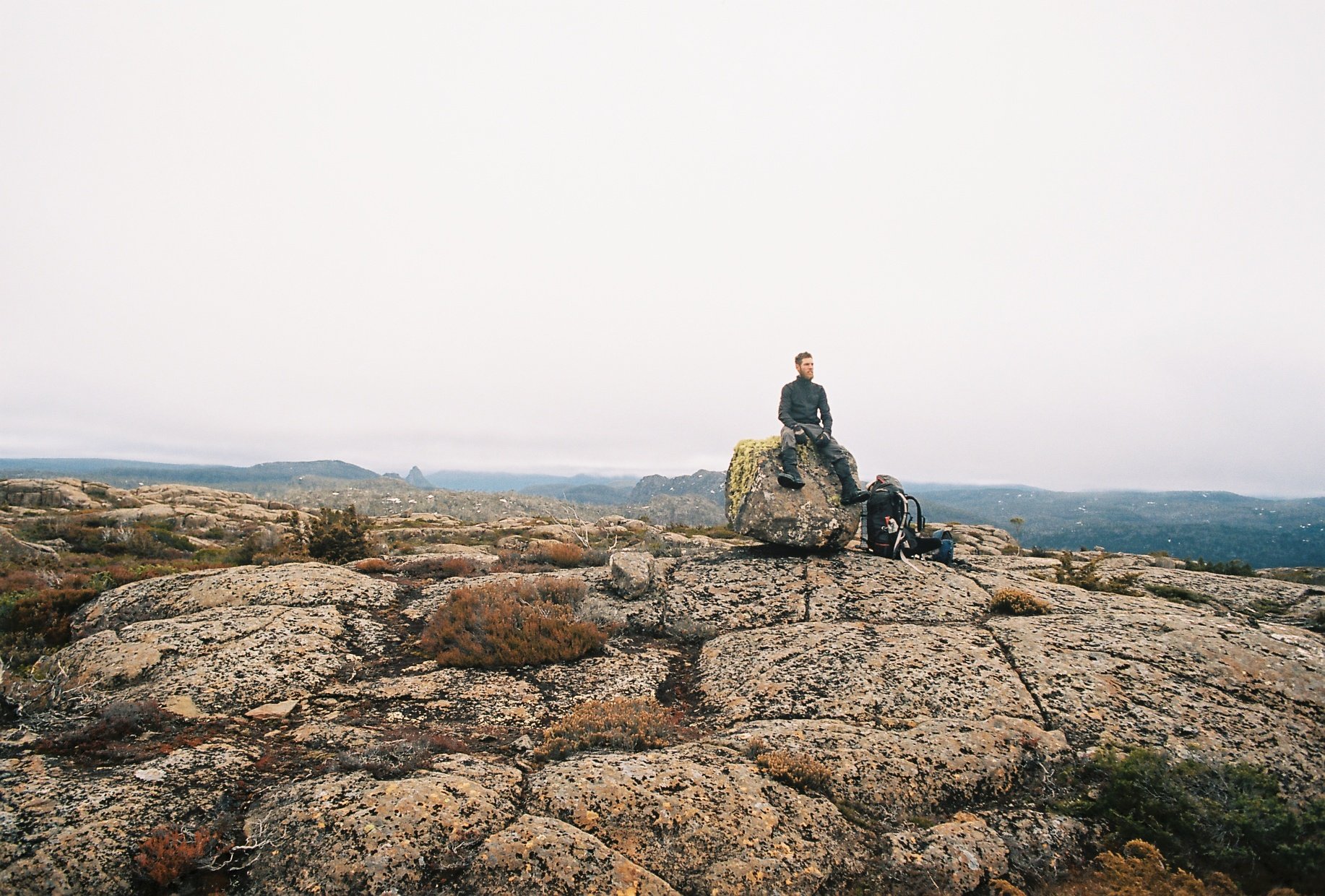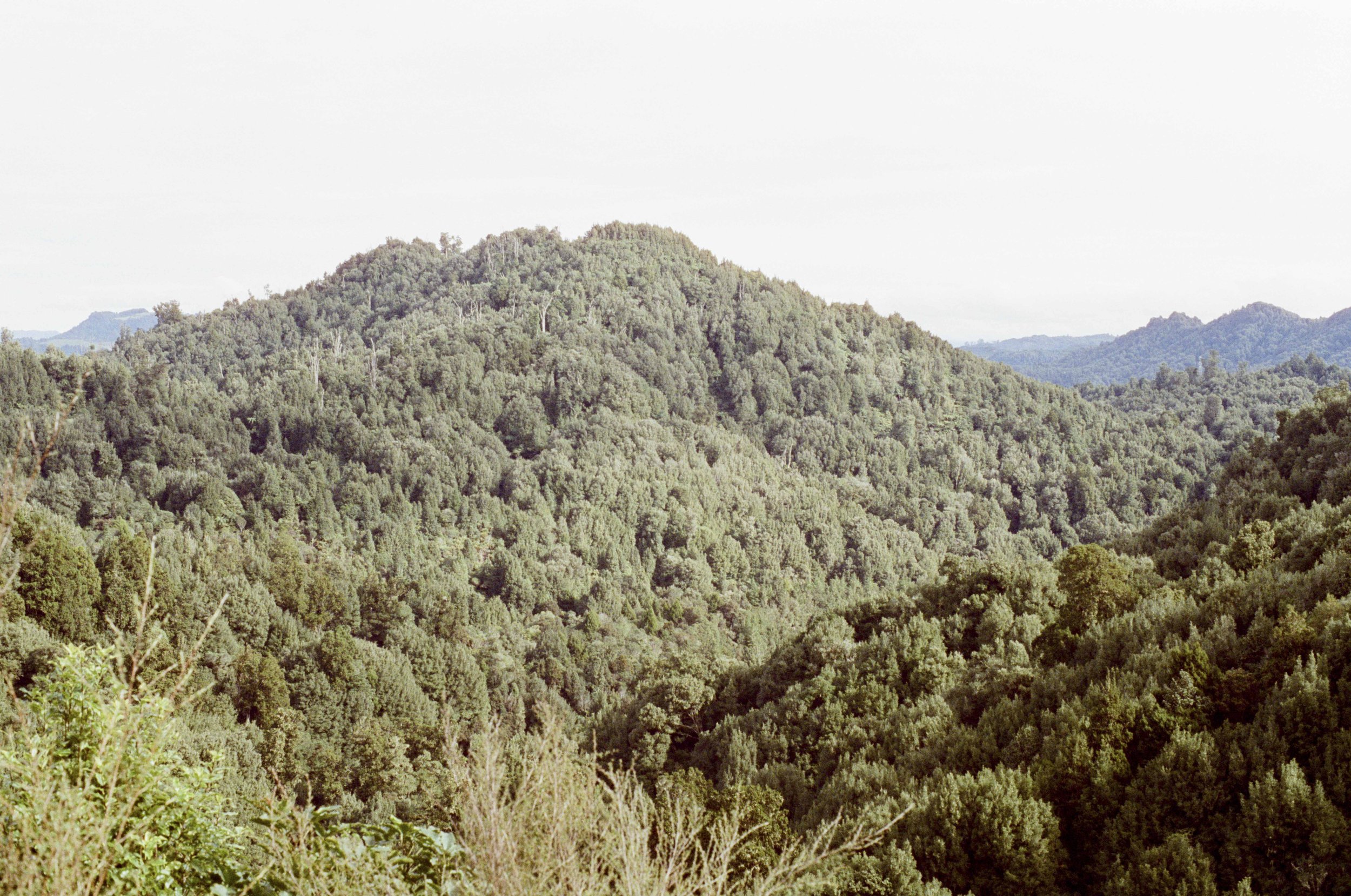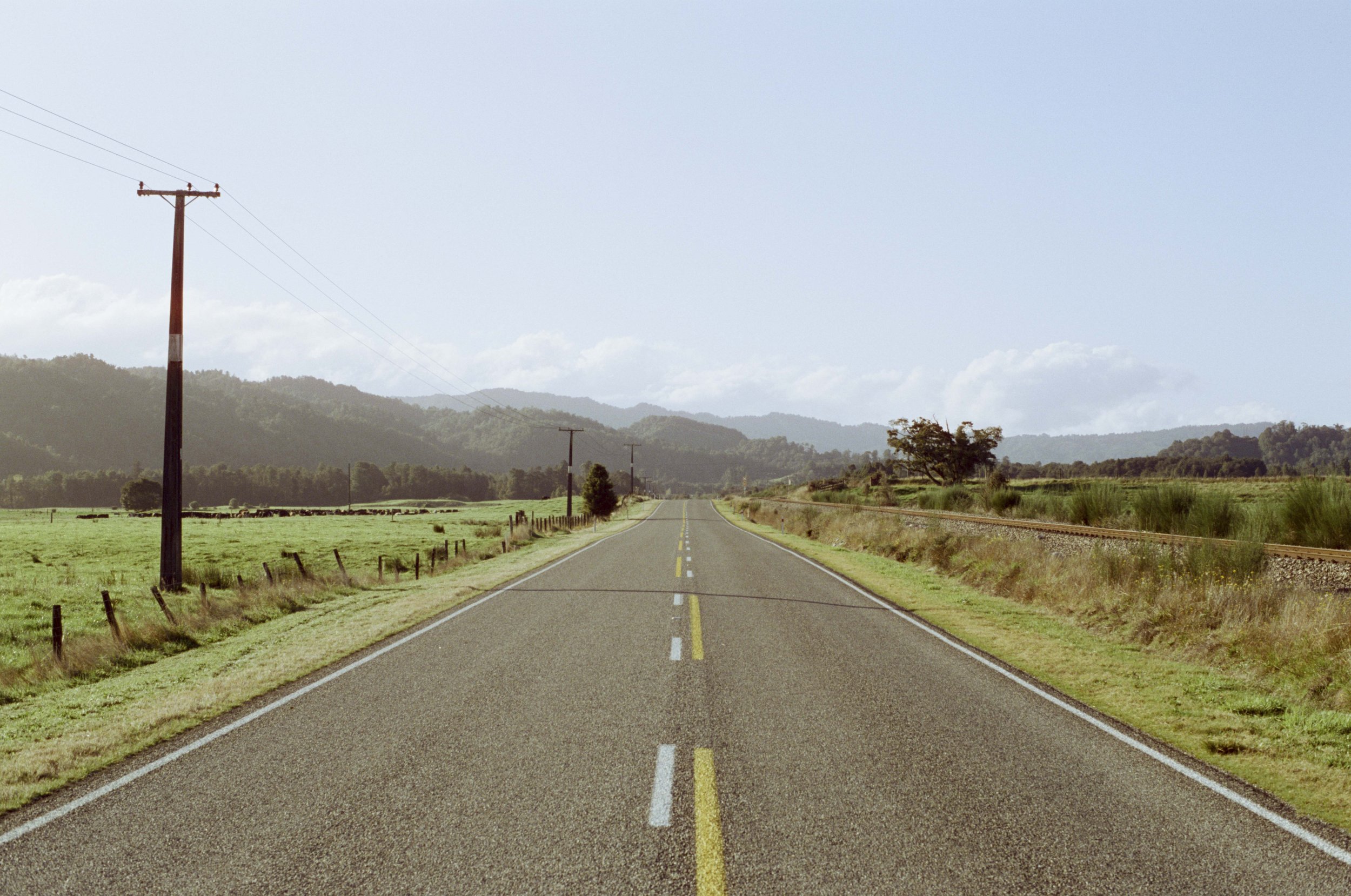I thought I would be safe by not taking any mountaineering equipment on my bike trip to Aotearoa. My theory was, If I didn’t have my mountaineering kit, then I wouldn’t be able to get myself into the mountains to get into trouble.
Of course, I couldn’t resist climbing high onto one mountain, to experience New Zealand’s alpine terrain … I had to get above the clouds.
Taranaki, the frozen volcano called my name.
Mt Taranaki. Pentax MX, Ektar 100, May 2024.
I put my coffee down on the ground for one minute to take a photo, and when I picked up my cup, the surface of the coffee had frozen over. So I broke it up with a spoon and had myself some iced coffee.
The storm had passed. The wind had calmed from a raging fury to a benign but persistent breeze. I had planned to spend one night, but spent two at Syme Hut, while a ‘polar blast’ blew across Taranaki.
Window. Pentax MX, Ektar 100, May 2024.
I had checked the forecast, and it honestly didn’t seem so bad. It looked cold, and a tad windy, but what happened was a lot fiercer than what I could have anticipated. The issue was the wind. The wind was gusting well over a hundred kilometres an hour across the top of Fanthams peak, a subsidiary peak of Mt Taranaki where Syme hut is located about 2000m above sea level.
Mt Taranaki is centred on a peninsula that sticks out into the Tasman Sea, so these clouds carry a lot of moisture in them. When the clouds get slammed into the mountaintop, the moisture condenses onto solid surfaces as rime or hoarfrost, always growing towards the wind. Initially, the surface of this ice is quite textured, therefore somewhat grippy. However, as I found out, when the sun hits it in the morning, the surface texture melts quickly, revealing the slick and smooth ice beneath.
Hut and dunny on the second morning. Pentax MX, Ektar 100 May 2024
I spent a day at the hut, waiting while the storm blew. There was no one else there. It was cold, but at least it was safe. My stove hadn’t fit into my pack so I couldn’t heat water. I mostly just stayed in my sleeping bag. I didn’t take a book to read with me. There was a book at the hut called the “Bushman’s Bible’. In fact, there were three copies. None of them read any better. Mostly I just meditated and slept. I had just enough food to last the extra day.
The second morning dawned clear. I figured I had to descend the mountain, before the weather deteriorated again that evening as per the forecast. I had no rations left. The water tank at the hut was frozen. In fact, the entire side of the mountain was coated in about two feet of ice. There was about a five hundred metres of steep descent to the grass. Completely frozen. What I needed was a set of boots, crampons and an ice axe. What I had was a pair of trail runners. Mt Taranaki had caught me out.
Hoarfrost on hut. Pentax MX, Ektar 100, May 2024.
I thought I could see a way down, that was feasible. It involved descending the steepest part of the ridge about a 100m from the track, where there were more boulders sticking out of the ice slope. Those boulders would act as my catching features, if I went into a slide. They also acted as footholds that I could step on without slipping. I knew I had to crawl on all fours, and to move very slowly and carefully. I intuitively knew I was in a lot of danger, but the seriousness of the situation didn’t dawn on me until I had crawled and slid my way about halfway down the frozen slope.
My technique was working, but the gaps between the boulders were getting bigger and bigger. Then I dislodged a rock, and I watched it slide and tumble all the way down. I thought at some point, this rock would stop. It didn’t. It just kept tumbling and sliding for hundreds of metres, until it eventually faded into the slope of the mountain. That’s when it hit me. I could have been that rock. It was at that point I realised I had to stop moving.
Sunrise after the storm. Pentax MX, Ektar 100, May 2024.
Besides, the boulders had well and truly run out. I was on an ice slope with no catching features directly beneath me. It looked like there may be a cliff about 200m below me. I turned to look above me and all I saw was a near vertical wall of ice. Where I had come down. Somehow. The conditions were deteriorating rapidly, the further down I got, the more slippery everything became. There was no way I could go back up, and I couldn’t go sideways and the only way down would have been the fast way down. I was well and truly stuck on the side of a frozen mountain, and the storm was coming in again later that day. The slope was raining tumbling bits of melting ice around me. Windchill was many degrees below and I had nowhere to go. I was in trouble.
That’s when I made a decision to call for help. My phone had been flat for over 24 hours, but I had a PLB so I dug it out of my pack. These days I don’t always carry a PLB, but I was bloody grateful I had it at that moment.
It is impossible to know what would have happened if I didn’t take the PLB with me up on that mountain. Perhaps I might have waited at the hut. Perhaps I would have checked the forecast more carefully. Or perhaps I would have been in exactly in the same situation, but without a means to call for help.
I pulled out the antenna. “Use only in grave and imminent danger.” I pushed and held the button. Nothing happened. Then I tried again, and again. Eventually, a red blinking light came on. I saw it flash green two or three times. I was in the lee of the mountain, reception was bad. And so I waited.
The trail at the top of Fanthams peak, before the descent. Pentax MX, Ektar 100, May 2024.
The sun was out, but soon I started shivering. I had all my layers on, including a puffy jacket, fleece pants and a hard shell jacket. So I got out my bivy bag and sleeping bag and got into it. Very carefully so I wouldn’t toboggan down the slope in my ultra slippery sil-nylon coffin. There was nothing to anchor to and nothing to hold onto. I had about a foot wide foot placement at the base of the boulder, that was the only contact with the ground that was stopping me sliding down the slope. So I moved very carefully and made sure I didn’t drop anything.
I don’t know how much time had passed. I had no way to measure the time. The PLB was flashing red, which I figured was bad, so I’d hold it up, move its position, until it flashed green, then back to red. I couldn’t get it to flash green continuously. Was this thing even working?
Rime detail, first light. Pentax MX, Ektar 100, May 2024.
About two hours after I had set off my device, the helicopter showed up. It simply popped out from behind the mountain, and there it was! I was wearing my orange hard-shell jacket, so very carefully I got out of my bivy bag and kneeled up onto my guardian angel boulder and waved my arms continuously. I knew they had to sight me. After doing a couple of loops, the heli went up to Fanthams Peak and landed two blokes in full mountaineering kit, who walked down the track, then across the slope towards me, while the heli circled overhead. They were wearing boots, crampons, had an axe, helmets and a pack each.
”How on Earth did you get here with that kind of footwear? It’s quite impressive you managed not to kill yourself.” - the volunteer SAR said to me.
”People die on this kind of terrain all the time”- the police SAR said.
“We are gonna winch you out of here.”
Which they did. I got winched off the side of Mt Taranaki with a helicopter. Alongside one of the SAR volunteers. Then the heli went back and got the police officer with the bags. They dropped me at the carpark, three kilometres from the visitor centre. The police officer said they wouldn’t charge me. I was grateful, shaken, humbled.
Truly, I underestimated New Zealand.
The Frozen Volcano. Pentax MX, Ektar 100, May 2024.
“You did the right thing.” -said the parks lady afterward at the visitor centre. Her and her husband had both volunteered for the mountain rescue for over thirty years. They weren’t my rescuers, but she had seen a lot of rescues on Taranaki. She said the shoulder season catches people out. In winter, people go prepared. In spring and autumn people don’t realise how bad the weather can get. How suddenly it can change.
“You know, sometimes I see the helicopter and wonder what’s happened…The main thing is you got down okay.”
Which I did. Thanks to the Taranaki Search and Rescue Team.
-A.S.
Lenah Valley, 27 June 2024















































